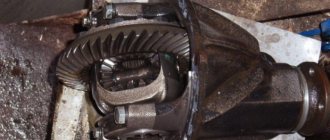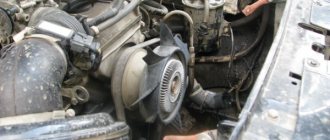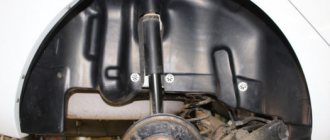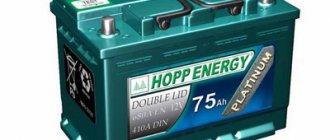When purchasing a brand new car at a car dealership, we sincerely hope that it will serve us faithfully for a long time. Indeed, the difference in the cost of a new and used car is the price that is paid for the trouble-free operation of the vehicle during the first few years of its operation.
But in addition to such organizational issues as registration, insurance and other mandatory things, car owners are soon faced with the need to undergo an intermediate inspection of the technical condition of the car, or zero maintenance. Beginners usually do not ignore this procedure, but there are also those who consider it an additional pumping of money. Let's figure out whether it is necessary to undergo TO-0 and whether it can be done on your own without visiting a dealership.
What is zero maintenance, why is it carried out?
Intermediate (aka zero) maintenance of a car should be understood as an out-of-service check of its main systems (the main focus is on the engine). As a rule, such maintenance is recommended to be performed with mileage in the range of 1500-7000 km. Some dealership service centers perform this type of maintenance free of charge, but in most cases it will cost money, although the amount should not be large.
Zero maintenance is not included in the mandatory (regulatory) procedures, since this is the ratio in TO-0 specified in the traffic rules. The procedure includes simple verification operations. During the break-in period, it is prescribed to operate the machine in a light mode, which is necessary for trouble-free grinding in of engine parts and other components. If you adhere to such recommendations, then no special problems should arise, but zero maintenance is carried out to make sure that the new car does not contain manufacturing defects and has successfully passed the initial tests.
In modern cars, the service interval is tied to mileage and is 10,000-15,000 kilometers. Zero maintenance is usually carried out when the speedometer displays 30-50% of the indicated mileage, but the recommended mileage value may vary from manufacturer to manufacturer. To find out when to take it to a service center, check your model's owner's manual.
Supporters of TO-0 argue their position by the fact that initial diagnostics of the car is necessary, while zero maintenance allows you to rid the engine and other components of the car from signs of running in.
Opponents of the procedure are convinced that modern cars do not need such a quick inspection, because their running-in is not so sensitive to the operating conditions during the first thousand km. mileage, like old cars.
Indeed, about 30 years ago, TO-0 was recommended by automakers. In particular, for VAZ 2101/2107/2114 models this procedure was considered mandatory. Today you will not find any mention of TO-0 in the Lada Vesta or Granta service book.
Is zero maintenance necessary or not?
If it is carried out, the manufacturer indicates in the service book information when to undergo zero maintenance. But you can come across cases when dealers personally write down the service number and the mileage at which it was done on the maintenance card. Found and repaired breakdowns are also recorded. But more often than not, everything is simpler: the documents describe TO-1, TO-2, TO-3, as well as the runs at which the events are held. There are no words about TO-0. If you don’t believe me, check the information on the plant’s website.
But the dealer can claim that during maintenance, for example, the oil is changed. Over 1000 km it will absorb a lot of metal shavings, because the elements of the new engine are actively grinding in. The service technicians will also check the remaining fluids. Filters and much more for 5-10 thousand rubles. Such service will not be superfluous, but it will also bring little benefit. New engines require almost no break-in, and even less chips fly off them - everything is done quite accurately and with high quality. You can ask directly from the car plant support service whether zero maintenance is required or not.
Here are the cars that usually do not require MOT-0:
- Audi
- Cadillac
- Ford
- Hyundai
- Kia
- Lexus
- Mazda
- Mercedes
- Nissan
- Renault
- Skoda
- Toyota
- UAZ
- Volkswagen
An approximate list of cars requiring MOT-0:
- LADA
- Suzuki
Is it necessary to do zero maintenance?
Recommendations are recommendations, but for many motorists this issue is quite relevant. Especially those of them who consider this procedure from the point of view of material costs. They are the ones who ask how necessary intermediate service is.
We believe that there is simply no clear answer to the question of whether zero maintenance is needed or not. A brand new car is a vehicle that has not yet been in operation, that is, the human factor has not yet had time to affect itself (meaning the use of low-quality filling fluids and consumables, unfavorable operating conditions, etc.). The probability of malfunctions occurring over a mileage of several thousand kilometers is indeed very small. With a high degree of confidence, we can assume that nothing serious will happen to the car before the first maintenance mark is reached.
But reality can still make its own adjustments. It is impossible to exclude a manufacturing defect, which was not detected at the stage of factory testing. Usually, such minor errors can be identified already during zero maintenance, and if measures are not taken to eliminate them (which is very possible if you skip an intermediate service), such minor troubles can develop into serious breakdowns or even cause the car to get into an accident.
It should also be mentioned that there is a problem with running in the oil filter. The fact is that for the first 7-10 days, automakers recommend not loading the engine, that is, driving at relatively low speeds. The reason for this is obvious - rotating parts that are not ground in will inevitably generate small particles that will clog the oil and accumulate in the filter. Therefore, it is recommended to carry out the first engine oil change not at the first, but at zero maintenance.
One way or another, zero maintenance is not necessary, and the final decision on its necessity must be made by the owner of the vehicle.
Zero maintenance and maintenance regulations
In the service card of each car, the manufacturer clearly indicates how often mandatory maintenance must be carried out and what work is performed. According to the manufacturer's regulations, TO1 is usually carried out with a mileage of 7 to 20 thousand kilometers and at least once a year. There is no separate line for zero maintenance in the card.
Thus, zero or intermediate maintenance is a technical inspection of a vehicle, which is carried out outside the regulations provided by the manufacturer. Zero maintenance is not mandatory. And if a manager presses you, telling you that factory oil contains a lot of metal particles, and steering or engine parts may become deformed during the grinding process, you can ask him to show you the maintenance schedule with intermediate maintenance in the service book or on the car company’s website. He simply won't be there.
That is, an intermediate technical inspection, which, depending on the model and car dealership, costs between 5 and 8 thousand rubles, is not provided by the automobile company. Another question is whether it is necessary to carry out a full diagnosis if the car is practically new and has only traveled 1-5 thousand km?
Logic dictates that the answer depends on the model of your car, country of assembly and operating conditions. During intermediate maintenance the following work is carried out:
- replacing engine oil and oil filters;
- measuring the oil level and checking its quality in the automatic gearbox;
- diagnostics of the chassis to identify possible damage and deformations;
- checking antifreeze and DOT 4 (brake fluid) levels;
- diagnostics of electrical equipment.
What's included in Zero Maintenance?
If you decide that intermediate maintenance needs to be performed, you will be interested in information about the composition (regulations) of this procedure. We have already noted above that the greatest load during break-in falls on the oil filter. But, in addition to changing the engine oil, a zero vehicle inspection involves performing a whole series of checks, the list of which may vary depending on the make/model of the vehicle. Typically such maintenance includes:
- checking the level and condition of the fuel fluid (and replacing it if necessary);
- monitoring the antifreeze level, adding fluid if necessary;
- checking the level and condition of transmission oil;
- inspection of suspension components and parts;
- checking the condition and functionality of the electrical components of the car.
The TO-0 regulations may also include an inspection of the interior, but the greatest attention is paid to the power plant.
Is it necessary to undergo zero maintenance?
Each car owner must decide for himself whether he requires zero maintenance. Experts agree that if the cost of such maintenance is not a serious problem for the car owner, and he wants the car to last as long as possible, such work should not be neglected. There are several reasons for this:
- In the first 5-7 thousand kilometers, the wear of parts in a car engine is indeed much more serious due to their “grinding in”. This causes large amounts of fine metal shavings to accumulate in the oil and oil filter. It has a negative impact on the car engine, and it is better to get rid of it as soon as possible. Just after about 5-7 thousand kilometers, the parts rub together enough to change the oil, and subsequently do not worry about its contamination with chips;
At zero maintenance, during a suspension inspection, the vehicle's wheel alignment is checked. Tire wear and vehicle handling depend on how correctly it is set;- Zero vehicle maintenance allows you to identify manufacturing defects, if any, at an early stage. If not detected in time, it can lead to serious problems, both warranty and non-warranty;
- By checking the fluids in the car, it is possible to detect the presence of all sorts of defects, such as a torn gasket (which can happen during its installation);
- Diagnosing sensors and wiring at an early stage helps ensure that all systems are working properly.
Depending on the class of car, city and other factors, the cost of zero maintenance may vary. Whether to pass it or not is the personal choice of each car owner. Not every car owner can competently carry out zero maintenance on their own, and if you don’t contact a service center, you can simply change the oil and oil filter, and also inspect the car for possible visible defects.
( 414 votes, average: 4.50 out of 5)
Trilon B: battery restoration and cooling system flushing
How to properly bleed the brakes
Related Posts
Is it possible to perform zero maintenance yourself?
We've already discussed whether it should be zero maintenance. According to statistics, those who consider this operation unnecessary are still much smaller. But among the supporters of this procedure, there are also those who believe that such work does not have to be carried out in a service center - after all, in most cases this is a paid event, and it does not include as many operations as with regular maintenance.
It is important to understand the potential benefits of intermediate maintenance and understand that performing some procedures yourself (meaning replacing the MM and oil filter) may void the warranty. Testing procedures do not carry any unpleasant consequences.
Whether it is worth changing the engine oil at zero maintenance depends on the results of checking its condition. If it is dirty or foreign particles are visible in it, then definitely yes, but keep in mind that without the appropriate experience, you can install the filter incorrectly, and this can lead to big troubles. The same consequences are possible if you install a filter that is not suitable for your model. But what you should be most concerned about is the possible cancellation of the warranty - after all, it is not difficult to notice an unauthorized replacement of the oil filter. So there is only one conclusion: in garage conditions, performing zero maintenance is only permissible if you are going to limit yourself to inspection only. Otherwise, it is better to visit a service center or wait for the first maintenance.
We understand that after reading this material you will not receive a direct and unambiguous answer to your question. But if your dealer insists on performing an interim inspection (and such cases are not uncommon), you can legally refuse without fear of consequences. But is it worth it? By spending approximately half the cost of regular maintenance, you will gain confidence that your car is in perfect technical condition.
What is Zero Car Maintenance?
Zero vehicle maintenance means a technical inspection that is performed outside the manufacturer’s recommended regulations for a new car before the first maintenance.
As you know, the standard average maintenance interval for modern cars is 10-15 thousand kilometers. It is assumed that zero maintenance should be performed approximately halfway before the first full technical inspection - that is, after 5-7 thousand kilometers.
Proponents of undergoing zero maintenance of a car argue that it is necessary to carry it out in order to quickly remove traces of run-in from the engine and other units, which can negatively affect its operation, as well as to diagnose the car as a whole. Opponents of such early maintenance base their opinion on the fact that modern car engines no longer need such maintenance, since break-in is less painful than on older car models.
Please note: Indeed, zero maintenance used to be directly recommended by the car manufacturer. For example, this was the case for many old Russian car models, such as VAZ 2115, 2107, 2114 and others. However, now not a word is said about zero maintenance even in the operating instructions for Russian cars, for example, Lada Vesta, Kalina or X-ray.











